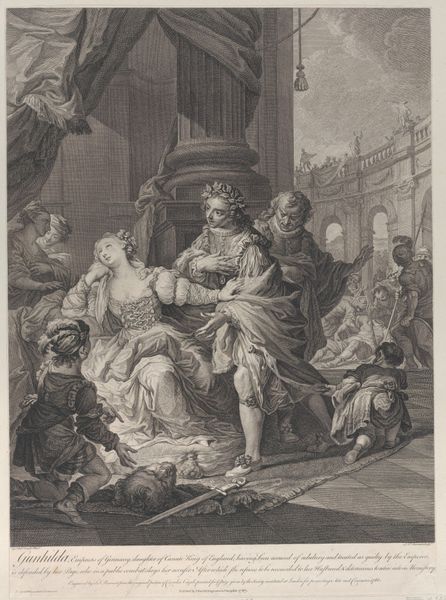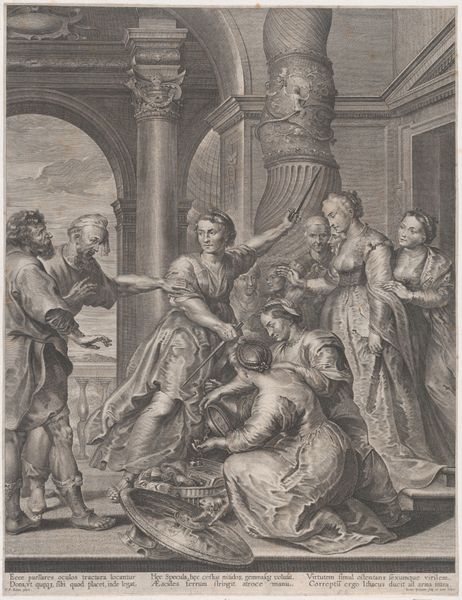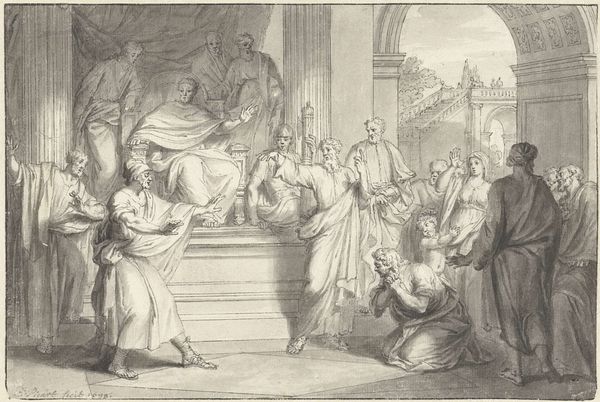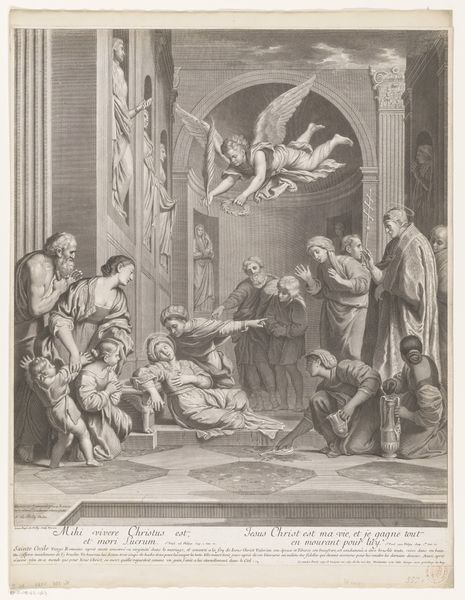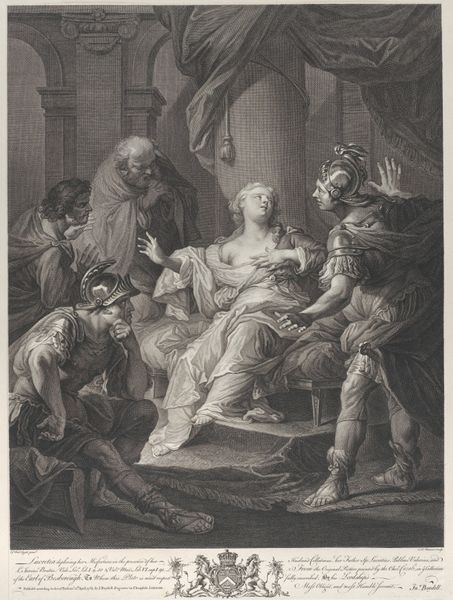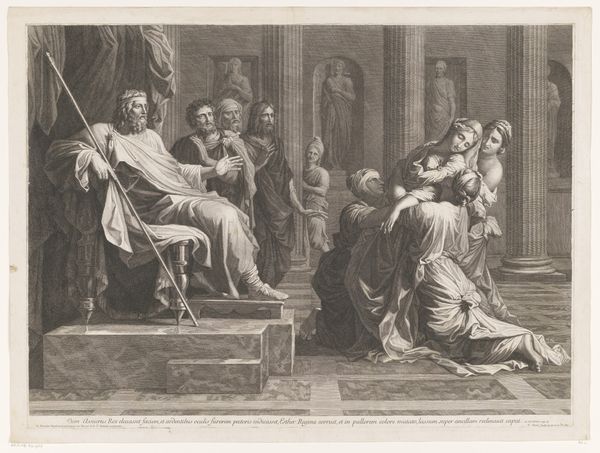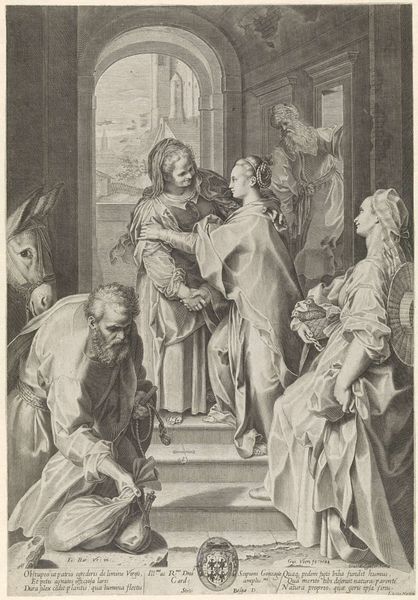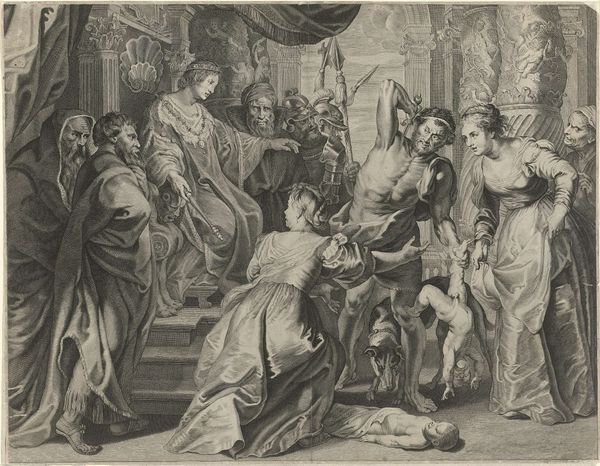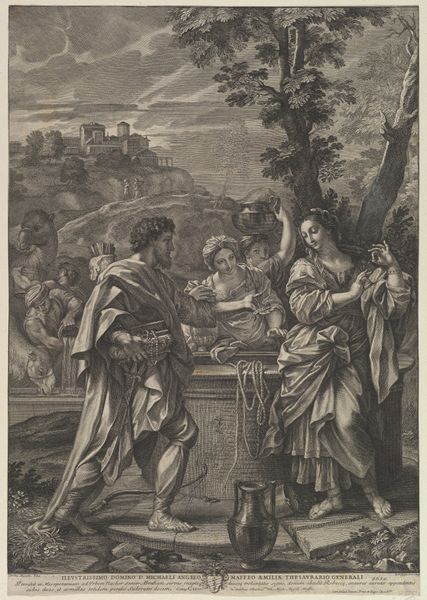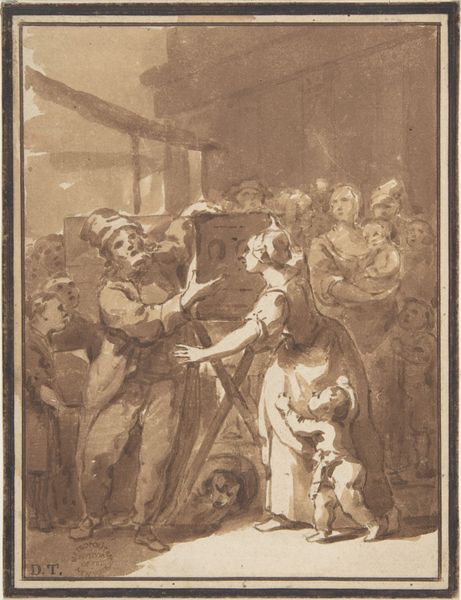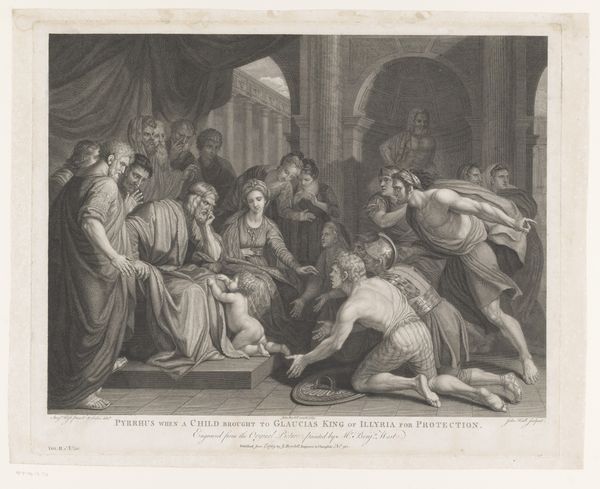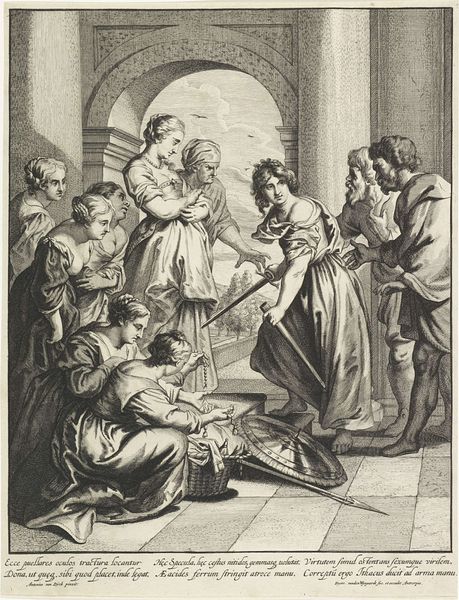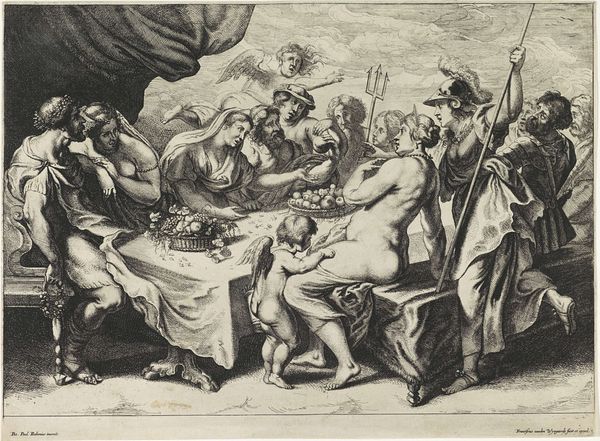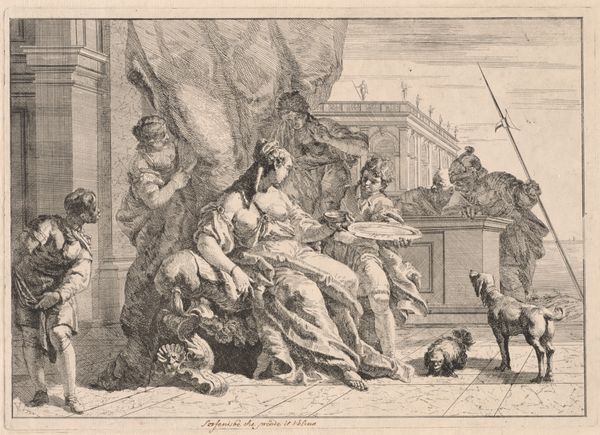
painting, oil-paint
#
narrative-art
#
baroque
#
painting
#
oil-paint
#
figuration
#
oil painting
#
history-painting
#
realism
Dimensions: height 103 cm, width 88 cm, depth 6.5 cm
Copyright: Rijks Museum: Open Domain
Curator: Welcome. Before us is Jan van Noordt’s 1672 oil painting, “The Continence of Scipio.” What strikes you first? Art Historian: The subdued palette sets a tone of moral solemnity. And, to be blunt, a large number of characters seem awkwardly crammed into the scene. How do you read it? Curator: Cramped? I find the composition dynamically organized around diagonal lines and contrasting textures. Scipio, in Roman garb, decisively breaks the lines on the right-hand side. While a cascade of satin falls on the left. The silver and gold objects lying in the foreground reflect those forms. Art Historian: Precisely. All pointing to Scipio's virtuous action: the rejection of material possessions and, of course, the captured woman he refuses to take advantage of. The work champions a narrative of Roman virtue for a 17th-century Dutch audience deeply invested in civic responsibility and morality. It is an imagined heroic history painting that the Dutch related to their national story. Curator: Yes, this work illustrates a complex interplay of light and shadow. It draws attention to Scipio as the hero. Also note how his red cloak mimics the curtains behind him, unifying figure and space. There is also, in front, an incredibly rendered dog. Art Historian: Dogs often stood for fidelity, here underscoring the concept of self-restraint and Scipio’s noble character in declining a prisoner and her ransom. Noordt presented an iconic representation of virtue which carries strong political and social weight within the context of its creation. Curator: Certainly, but I cannot help appreciating how Noordt uses realism to convey texture—the shimmer of silk, the hardness of metal—rendering each element vividly and yet subordinating them to the dramatic narrative of honor. His commitment is toward material fidelity which then expresses intangible ideas. Art Historian: This “Continence” becomes more than just skillful rendering; it acts as a moral example for the powerful mercantile class who patronized art, subtly instructing viewers on leadership through integrity, a crucial lesson within the framework of Dutch republicanism. It is ultimately about statecraft, in my reading. Curator: Perhaps. For me it underscores the powerful harmony among design elements working in unison toward creating not just narrative, but experience for the eye and the mind. Art Historian: A perfect meeting of artifice and reality.
Comments
No comments
Be the first to comment and join the conversation on the ultimate creative platform.
